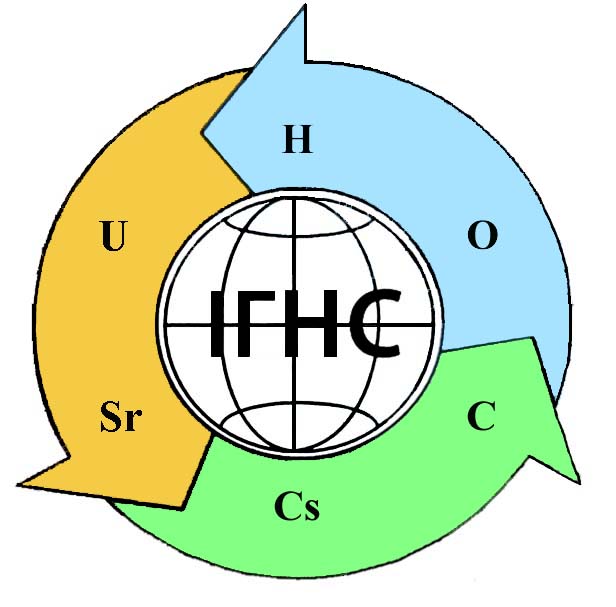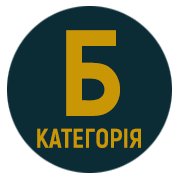EVALUATION OF MOSSES AND LICHENS AS TEST-OBJECTS OF MONITORING OF 137СS CONTAMINATION OF PINE FOREST BIOGEOCENOSES IN UKRAINIAN POLISSIA
DOI:
https://doi.org/10.32782/geotech2022.35.05Keywords:
Ukrainian Polissia, forest biogeocenoses, 137Cs specific activity, radiation monitoring, test-objects, mosses, lichens, Hypogymnia physodes, concentration ratioAbstract
The goal of this study was to give comparative evaluation of applicability of different species of mosses and lichens for radiation monitoring of 137Cs contamination of pine forest biogeocenoses in Ukrainian Polissia in different forest-ecological conditions (FEC). Objects of research were: species composition of mosses and lichens on stationary experimental plots (SEP), their occurrence in FEC–В3 and FEC–А1, sufficiency for multiyear monitoring, values of 137Сs specific activity in investigated indicator species, and concentration ratio (CR) in the system «indicator biomass – substratum». Research was carried out in 2020 in Ukrainian Polissia, Zhytomyr Region, on 4 stationary experimental plots: SEP-1 – in forest-ecological conditions FEC–В3, SEP-2, 3, 4 – in FEC–А1. For these forest-ecological conditions occurrence of indicator species of mosses and lichens as well as their sufficiency for sampling at multiyear monitoring was studied by route method on 20 forest sites. On each SEP, samples of moss and lichen species were collected in sets of 3-5 repetitions. The substratum was sampled directly below them: for epigeous species – soil at the depth of 20 cm, for epiphytic ones – pine bark. 137Сs specific activity was measured on spectrum analyser SЕG-001 «АKP-S»-150 with scintillation detector BDЕG-20-R1. Relative error of measurement – < 15 %. A concentration ratio (CR) was chosen as an index of intensity of 137Cs accumulation by biota. The occurrence of the following species-indicators of radioactive contamination of a pine forest were shown to prevail in FEC–В3: Dicranum polysetum, Pleurozium schreberi, Hypogymnia physodes; in FEC–А1: Cladonia mitis, Cladonia rangiferina, Hypogymnia physodes, Dicranum polysetum. It was found that in FEC–В3, the average values of CR in Dicranum polysetum (2.31±0.127) significantly exceeded the corresponding values in Pleurozium schreberi (1.64±0.06). The difference of the average CR values was essential at a confidence level of 95 %. In FEC–В3, epiphytic lichen Hypogymnia physodes was characterized by the highest average CR value (8.45±0.33), i.e. the difference with mosses was statistically reliable. In FEC–A1, epigeous mosses accumulated 137Cs more intensively than epigeous lichens of genus Cladonia, the average CR values were 4.78±0.28 and 2.51±0.15, respectively, the difference was essential. In FEC–A1, the group of epiphytic lichens was characterized by the maximum CR, with average value 6.84±0.36, which was essentially and reliably different from the corresponding values of the group of epigeous lichens and the group of epigeous mosses. It was found that among the indicator species of mosses and lichens, Hypogymnia physodes was characterized by the highest values of radiocontamination in investigated forest ecological conditions.
References
Cornelssen, J.H.C., Lang, S.I., Soudzilovskaia, N.A., During, H.J. (2007), Comparative Cryptogam Ecology: A Review of Bryophyte and Lichen Traits that Drive Biogeochemistry. Annals of Botany, 99: 987–1001.
Dohi T., Ohmura Y., Kashiwadani H., Fujiwara K., Sakamoto Y.,
Iijima K. (2015), Radiocaesium activity concentrations in parmelioid lichens within a 60 km radius of the Fukushima Dai-ichi Nuclear Power Plant. J. Environ. Radioactivity, 146: 125-133.
Eckl, P., Turk, R., Hofmann, W. (1984), Natural and man-made radionuclide concentrations in lichens at several locations in Austria. Nord-J.-Bot. Copenhagen, Denmark: Council for Nordic Publications in Botany, 4(4): 521–524.
Fedotiuk, O.V., Кurbet, Т.V. (2017), Distribution of caesium-137 specific activity in components of moss-lichen cover. Abstracts of ХІII Ukr. Scien. on-line Conf. “Modern Problems of Ecology”. Zhytomyr, ZhDTU. URI: http://eztuir.ztu.edu.ua/123456789/6391.
Giovani, C., Nimis, P.L., Bolognini, G., Padovani, R., Usco, A. (1994), Bryophytes as indicators of radiocesium deposition in norteastern Italy. Sci. Total Environ. 157(1-3): 35-43. DOI: 10.1016/0048-9697(94)90563-0.
Golovko, О.V. (2021), Migration and redistribution of 137Cs in bog ecosystems of Western Polissia of Ukraine (PhD Thesis). National University of Water and Environmental Engineering, Rivne, 26 p.
Guilitte, O., Brobant, B., Garsia, M.S. (1990), Use of mosses and lichens for the evaluation of radioactive fallout, deposits and flows under forest cover. Mem. Soc. Royal Bot. Belg. 12: 89-95.
Hofmann, W., Attarpour, N., Letter, H., Turk, R. (1993), 137Cs concentrations in lichens before and after the Chernobyl accident. Health Phys., 64(1): 70-73.
Mattsson, L.J.S. (1975), I37Cs in the reindeer lichen Cladonia alpestris: deposition, retention and internal distribution, 1961-1970. Health Physics, 28(3): 233-248.
Melnyk, V.V., Кurbet, Т.V. (2018), Peculiarities of accumulation of caesium-137 in moss cover of forests of Ukrainian Polissia. Scientific Horizons, 2(65): 51-57.
Miettinen, J.K. (1969), The present situation and recent developments in the accumulation of Cs-137, Sr-90 and Fe-55 in Arctic foodchains. Environ. Contamin. Radioact. Mater. Vienna: 145-150.
Pavlenko, А.P., Оrlov, О.О. (2020), Mosses and lichens as test-objects of monitoring of radioactive contamination of pine forests of Ukrainian Polissia by 137Сs. XХVІІ Annual Scientific Conference of the Institute of Nuclear Research of NAS of Ukraine: annotation to reports. Kyiv, Institute of nuclear research of NAS of Ukraine: 319-320.
Quality of Soil. Methodology of soil sampling for radiation control. SOU 74.14-37-425:2006. Кyiv, Ministry of Agrarian Policy of Ukraine, 2006. 15 p.
Оrlov, О.О. (2021), Regularities of 137Cs migration on geochemical barriers of marginal zone of mesotrophic bog in Ukrainian Polissia. Geochemistry of Technogenesis, 6(34): 58-70.









